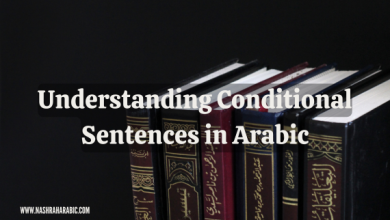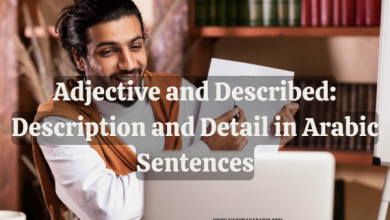Introduction
Have you ever felt overwhelmed by the thought of analyzing Arabic literary texts? You’re not alone. The intricate language, rich cultural context, and diverse literary styles can be daunting. But fear not! Just like solving a complex puzzle, breaking down and understanding Arabic texts can be a rewarding experience once you have the right tools and techniques. In this guide, we will take you through the steps to master the art of analyzing Arabic texts, making it easier and more enjoyable.
Understanding the Basics
Before diving into the analysis, it’s essential to grasp the basic elements of Arabic literature. Think of it like learning the alphabet before trying to write a novel. Understanding the basics provides a strong foundation for more detailed analysis.
The Building Blocks of Arabic Texts
Arabic literary texts are composed of several key elements:
- Syntax and Grammar: The structure of sentences.
- Vocabulary: The choice of words and their meanings.
- Style: The unique way an author expresses their ideas.
Why Basics Matter
Mastering these basics allows you to appreciate the nuances and depths of Arabic literature. It’s like knowing the ingredients in a recipe, enabling you to understand how different flavors combine to create a dish.
The Importance of Context
Context is everything when analyzing Arabic texts. Without it, you’re likely to miss significant meanings and connections.
Historical Context
Knowing the historical period in which a text was written can provide insights into its themes and messages. For example, understanding the socio-political environment during the Abbasid Caliphate can shed light on the works of poets like Al-Mutanabbi.
Cultural Context
Arabic literature is deeply rooted in its cultural context. Familiarity with Islamic traditions, Arabic customs, and societal norms can enhance your understanding of the text.
Identifying Literary Devices
Literary devices are the tools writers use to convey their messages more effectively. Recognizing these devices can significantly enhance your analysis.
Common Literary Devices in Arabic Texts
- Metaphor: A figure of speech that describes an object or action in a way that isn’t literally true.
- Simile: A comparison using “like” or “as.”
- Alliteration: The repetition of consonant sounds at the beginning of words.
Example
In the famous poem “Al-Burdah” by Al-Busiri, metaphors and similes are extensively used to praise the Prophet Muhammad. Identifying these devices can reveal the depth of the poet’s admiration and devotion.
Themes and Motifs
Themes are the central ideas explored in a text, while motifs are recurring elements that reinforce these themes.
Identifying Themes
Look for overarching messages or ideas in the text. For example, themes of love, heroism, and faith are common in Arabic poetry.
Recognizing Motifs
Motifs can be symbols, phrases, or situations that appear repeatedly. For instance, the motif of the desert in Arabic literature often symbolizes both beauty and hardship.
Character Analysis
Characters are the heart of any literary work. Analyzing their traits, motivations, and development can provide deeper insights into the text.
Steps for Character Analysis
- Identify Main Characters: Focus on the protagonists and antagonists.
- Analyze Traits: Consider their personalities, actions, and speech.
- Understand Motivations: What drives these characters? Are their actions influenced by love, fear, ambition?
Example
In “One Thousand and One Nights,” Scheherazade is a complex character whose intelligence and bravery save her life. Analyzing her character can reveal themes of wisdom and resilience.
Plot Structure
The plot is the sequence of events in a story. Understanding the structure can help you see how the story unfolds and why it is compelling.
Common Plot Structures in Arabic Texts
- Linear: A straightforward chronological order.
- Non-linear: Events are presented out of chronological order.
- Framed Narrative: A story within a story, as seen in “One Thousand and One Nights.”
Analyzing Plot
Break down the plot into its main components: exposition, rising action, climax, falling action, and resolution. This helps you understand the narrative flow and key turning points.
Language and Style
The language and style of an Arabic text are crucial in conveying its mood and tone.
Language
Pay attention to the choice of words and their connotations. Arabic is a rich language with many layers of meaning.
Style
Consider the author’s unique way of expressing ideas. Is it formal or informal? Poetic or straightforward?
Example
The ornate style of pre-Islamic poetry, known as “Mu’allaqat,” is characterized by elaborate descriptions and formal language, reflecting the values and aesthetics of the time.
Symbolism and Imagery
Symbolism and imagery add depth to a literary text, allowing readers to uncover hidden meanings.
Identifying Symbols
Look for objects, characters, or events that represent larger ideas. For example, the moon often symbolizes beauty and femininity in Arabic poetry.
Analyzing Imagery
Imagery involves descriptive language that creates vivid pictures in the reader’s mind. Pay attention to sensory details and their effects.
Cultural and Historical Background
Understanding the cultural and historical background of a text can provide essential context for your analysis.
Historical Background
Research the time period in which the text was written. This can help explain certain themes and references.
Cultural Background
Familiarize yourself with the cultural practices, religious beliefs, and societal norms reflected in the text.
Comparative Analysis
Comparing Arabic texts with works from other cultures can provide new perspectives and insights.
Why Compare?
Comparative analysis can highlight universal themes and unique cultural elements. It can also deepen your appreciation of different literary traditions.
How to Compare
Identify common themes, literary devices, and styles. Discuss similarities and differences, and consider the cultural contexts of each work.
Practical Tips for Analysis
Here are some practical tips to help you effectively analyze Arabic literary texts.
Read Actively
Take notes, highlight key passages, and ask questions as you read.
Discuss with Others
Engage in discussions with fellow readers or join a study group. Different perspectives can enhance your understanding.
Use Technology
Leverage digital tools and resources to aid your analysis. Online dictionaries, annotation tools, and academic databases can be valuable assets.
Common Mistakes to Avoid
Avoid these common pitfalls to ensure a more accurate and insightful analysis.
Overlooking Context
Never ignore the historical and cultural context of a text. It’s essential for a comprehensive understanding.
Ignoring Literary Devices
Literary devices are not just decorative; they are integral to the text’s meaning.
Rushing the Process
Take your time to thoroughly read and analyze the text. Rushing can lead to superficial conclusions.
Using Technology in Analysis
Technology can significantly enhance your ability to analyze Arabic texts.
Digital Tools
- Online Dictionaries: For quick translations and definitions.
- Annotation Software: For making notes and highlighting important sections.
- Academic Databases: For accessing scholarly articles and analyses.
Benefits of Technology
Using technology can save time, provide access to a wealth of information, and allow for more detailed and organized analysis.
Conclusion
Analyzing Arabic literary texts may seem daunting at first, but with the right approach and tools, it can be an enriching and enjoyable experience. By understanding the basics, considering the context, identifying literary devices, and leveraging technology, you can unlock the deeper meanings and beauty of Arabic literature. Happy reading!
FAQs
1. What is the importance of context in analyzing Arabic texts?
Context provides the historical, cultural, and social background that helps you understand the deeper meanings and themes of the text.
2. How can I identify literary devices in Arabic texts?
Look for common devices like metaphors, similes, and alliteration. These are often used to enhance the text’s meaning and impact.
3. What are some common themes in Arabic literature?
Common themes include love, heroism, faith, and the human condition. These themes reflect the cultural and historical context of the literature.
4. How can technology aid in the analysis of Arabic texts?
Technology provides tools like online dictionaries, annotation software, and academic databases that can enhance your analysis by providing quick access to information and facilitating detailed notes.
Don’t forget to subscribe to our channel !




